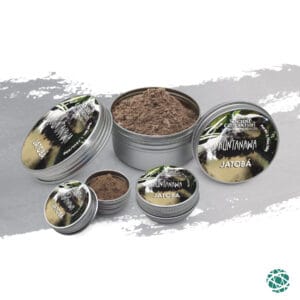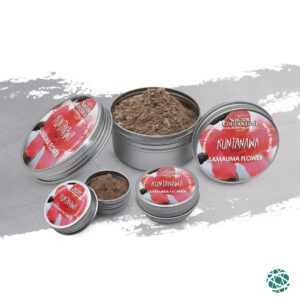The Apurinã Tribe: Guardians of the Purus River and Keepers of Living Tradition
Exploring the cosmology, lifestyle, and sacred plant knowledge of a remarkable Indigenous people of the Brazilian Amazon
Introduction
In the heart of the Brazilian Amazon, along the winding banks of the Purus River, lives one of the most spiritually rich and resilient Indigenous peoples of South America — the Apurinã. Also known as Popũkare in their own language, the Apurinã are caretakers of ancient wisdom, oral traditions, and a unique way of life deeply rooted in harmony with nature, sacred ritual, and the spirit of the forest.
At Sacred Connection, our work with the Apurinã is a testament to mutual trust and shared purpose. We collaborate directly with their communities to share their extraordinary green rapé (awiry) with the world in a way that honors its origins and supports the preservation of their culture.
In this article, we journey into the world of the Apurinã — their history, language, myths, medicine, and spiritual traditions — offering insight into a people who walk between the ancestral and modern worlds with grace and wisdom.
Who Are the Apurinã?
The Apurinã are an Indigenous people of the Brazilian Amazon, with an estimated population of over 7,000 individuals spread across various villages and territories along the Purus River, a major tributary of the Amazon. Their traditional lands span the states of Acre and Amazonas, encompassing both remote rainforest territories and increasingly encroached-upon regions under threat from logging, agriculture, and land exploitation.
While modern pressures and colonial history have impacted their autonomy, the Apurinã have remained deeply committed to their traditions, adapting to external realities while holding firm to their spiritual practices, language, and social structures.
Language and Identity
The Apurinã Tribe speak a language belonging to the Arawakan (Maipurean) family, one of the most widespread and ancient linguistic groups in South America. Known as Apurinã or Ipuriná, the language is part of the Purus branch of Arawakan and closely related to that of the Manchineri (Piro) people, who inhabit regions further upriver.
Within their own communities, the Apurinã refer to themselves as Popũkare, a name deeply rooted in their cosmology. Efforts are underway to preserve and revitalize their language, particularly among younger generations, despite the increasing dominance of Portuguese in formal education and administrative structures.
Traditional Way of Life
The Apurinã maintain a semi-nomadic and subsistence-based lifestyle, centered on the rhythms of the forest and river. Fishing, hunting, gathering, and small-scale farming form the core of their economy, with staples including manioc, bananas, and native fruits.
Houses are typically constructed from forest materials such as wood, palm leaves, and bamboo, and organized into villages that emphasize communal living and shared decision-making. The river is both a highway and a lifeline, providing food, transportation, and spiritual symbolism in their cosmology.
Although external influences, including technology and education, have entered many villages, the Apurinã continue to prioritize ancestral customs, collective rituals, and a spiritual ecology that shapes every aspect of daily life.
Mythology and Cosmology
The Apurinã Tribe worldview is steeped in animism, ancestral myths, and spiritual storytelling. Every stone, plant, animal, and celestial body holds meaning and spirit. They believe in a world alive with invisible forces that can offer protection, guidance, or, if disrespected, consequences.
One of the central aspects of their mythology involves mythic battles between shamans, spiritual beings, and the forest itself. These stories are passed down orally and are often re-enacted through ritual or embedded in the structure of shamanic songs.
Their cosmos is layered — with realms above, below, and within — and the shaman (or pajé) is the mediator between them. Ceremonial gatherings, often called Xingané, serve as both social and spiritual functions, bringing villages together in celebration, healing, or remembrance of the dead.
Spiritual Practices and Shamanism
Shamanism is at the heart of Apurinã spiritual life. The pajé, or shaman, is a healer, diviner, and protector of cosmic balance. Their initiation is long and arduous, often requiring months of isolation in the forest, fasting, abstinence, and deep communion with spirit plants and guiding forces.
One of the most striking aspects of Apurinã shamanism is the use of stones as both causes and cures of disease. Shamans are believed to carry sacred stones within their own bodies, which enable them to diagnose illnesses, draw out spiritual intrusions, and transfer healing energy to the patient.
Treatments often involve:
- Chewing special leaves, like katsoparu
- Using green rapé (Awiry) to open spiritual vision
- Sucking illness from the body, followed by divinatory interpretation of the extracted object
- Ritual dialogue, explaining the nature of the illness — whether caused by spirits, wild animals, or sorcery
Shamanic healing can be private or communal. Sometimes, the entire village gathers to witness, support, and participate in the healing, reflecting the Apurinã tribe’s understanding that health is collective, not just individual.
Rituals and Xingané Ceremonies
Among the Apurinã tribe, ceremonies called Xingané (kenuru) range from simple midnight song sessions to large inter-village gatherings. These events serve many purposes: welcoming guests, honoring ancestors, strengthening alliances, and feeding the spirits of the dead.
Ceremonial meals include:
- Fermented manioc wine
- Fruits of the patauá palm
- Roasted meats and shared forest foods
- Sometimes gasoline, offered to power boats for distant visitors
One unique ritual practice involves ritualized confrontation, where guests and hosts arrive armed, painted, and shouting—a theatrical reenactment of ancient tribal conflict that ultimately ends in shared snuff rituals, laughter, and peace offerings. These practices reflect a culture where conflict is ritualized to maintain peace and where the symbolic is as powerful as the literal.
Apurinã Rapé: Awiry, the Sacred Green Snuff
Perhaps one of the most unique and important contributions the Apurinã have made to the wider world of plant medicine is their rapé Awiry, or Apurinã Green Rapé. Unlike most rapé blends, which are heavy in ash and dark tobacco, Awiry is made primarily from the green leaves of a sacred plant that grows wild along the banks of the river.
The preparation of Awiry:
- Harvested during the dry season, when the river recedes
- Sun-dried and finely ground — never fermented
- Minimal ash content (around 8%), preserving the raw plant essence
- Used in large quantities by shamans during healing work
Awiry is sniffed through a bone or bamboo tube, directly from the hand — a method unique to the Apurinã. It is said to bring clarity, connection to the plant spirit, and energetic cleansing without overwhelming the senses. Many users describe it as uplifting, gentle, and deeply grounding, making it ideal for daytime ceremonies or contemplative work.
🌿 Discover Apurinã Green Snuff – Awiry in our online shop
🙏 All sales directly support the Apurinã communities and forest preservation
Colonial Impact and Modern Resistance
The Apurinã tribe, like many Indigenous peoples of the Amazon, suffered deeply during the rubber boom (late 1800s–early 1900s). Many were forcibly recruited or enslaved to work in extraction, their villages displaced or destroyed. The trauma of this era lives on in oral history and ancestral memory.
To this day, the Apurinã tribe face challenges such as:
- Illegal logging and land encroachment
- Slow or denied recognition of traditional territories
- Pressure from missionary activity and cultural loss
- Environmental degradation impacting their medicine and food systems
Yet they continue to resist and organize, asserting their rights through alliances, education, and cultural pride. Many villages are actively involved in territorial mapping, legal advocacy, and intergenerational knowledge transmission to keep their ways alive.
Sacred Connection and Our Work with the Apurinã tribe
At Sacred Connection, we believe in walking with integrity and respect. Our partnership with the Apurinã is based on trust, fair trade, cultural sensitivity, and transparency. We don’t just source medicine — we invest in long-term relationships.
Through our collaboration:
- We help support land-based livelihoods
- We co-develop sustainable plant medicine supply chains
- We support projects in food sovereignty, education, and cultural resilience
When you purchase Apurinã Green Snuff or share their story, you become part of this sacred circle of reciprocity — giving back to the people and plants that give so much to the world.
A Living Culture, A Living Forest
The Apurinã tribe is not a relic of the past — they are living guardians of the forest, carriers of ancestral medicine, and teachers of another way of being. Their knowledge, rituals, and sacred snuff are gifts to a world in search of reconnection.
We honor them not just through our words, but through right relationship, ethical exchange, and by keeping the spiritual dialogue alive between Earth’s oldest cultures and those who are just now remembering.
















